Online Panel Discussion on Climate Change and Nature-based Solutions | #ClimateofChange
What are nature based solutions? ‘Nature-based solutions’ is the latest green and climate jargon that you should follow. Surprisingly, it means more than you might think! Talking about nature-based solutions as real and vital concepts has been the key topic of our third webinar of the #ClimateofChange series.
On the 27th November, YEE held its third webinar of the #ClimateofChange series, this time examining the theme of nature-based solutions to climate change. Our outstanding panel of speakers talked our participants through what nature-based solutions are, the challenges and controversies in implementing them, how they feature in current European legislation, as well as the overall importance of the role that nature-based solutions play in climate adaptation.
The Climate of Change project is a pan-European campaign to build a better future for climate-induced migrants, the human face of climate change, and our series – in collaboration with the EEB and Youth4Nature – has explored the intersection of climate change and migration, public health, and now nature-based solutions. All of the knowledge and discussions from these webinars will feed into our final event, which is a youth dialogue with the Director-General of DG CLIMA on Tuesday the 8th December.
Félix Feider, our Liaison Officer on Biodiversity, moderated the webinar and facilitated the discussions between our expert panel, as well as selecting incisive questions to put to the speakers from our wonderfully engaged audience. 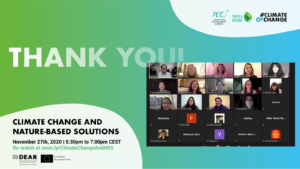 In case you weren’t able to make it, you can watch it here or read the following summary, and if you did manage to join us and want to learn more about the topic, then we have assembled some additional resources for you below!
In case you weren’t able to make it, you can watch it here or read the following summary, and if you did manage to join us and want to learn more about the topic, then we have assembled some additional resources for you below!
The first speaker we heard from was Amanda Krijgsman, Junior Researcher on Nature-Based Solutions at Wageningen University & Research, part of the IPBES technical support unit on scenarios and models, and the Global Ambassador for Youth4Nature. She talked about the relationship between the climate crisis and the biodiversity crisis, and how, although ecosystems underpin almost all aspects of human development, they are being degraded faster now than ever before in human history. Amanda then gave us the recent IUCN definition of nature-based solutions (NBS) as “actions to protect, sustainably manage, and restore natural or modified ecosystems”, and illustrated the positive role that they play in mitigating both of these emergencies and in improving human well-being. She really got across how vital it is that we fully recognise how much nature provides to us, how interdependent we are with it, and thus how important it is to safeguard it.
Our second panellist was Eirini Sakellari, a member of the Youth Team of the Global Landscapes Forum and the Policy Working Group of Global Youth Biodiversity Network Europe+, as well as the co-founder of the Not Just Fashion movement in Greece.  She explained that NBS is quickly becoming a major topic in policy discussions, but this move from a niche academic subject to a mainstream policy tool has led to a number of competing interpretations of the concept, as well as thus the risk of the greenwashing of practices by businesses or governments that are in fact actually harmful. One of the most common challenges that this implementation of NBS faces is the lack of transparent or democratised decision-making. In order to address these issues, Eirini concluded by emphasising some key considerations called for by youth, in particular that NBS must be context-specific and informed not only by science but also by indigenous people and women.
She explained that NBS is quickly becoming a major topic in policy discussions, but this move from a niche academic subject to a mainstream policy tool has led to a number of competing interpretations of the concept, as well as thus the risk of the greenwashing of practices by businesses or governments that are in fact actually harmful. One of the most common challenges that this implementation of NBS faces is the lack of transparent or democratised decision-making. In order to address these issues, Eirini concluded by emphasising some key considerations called for by youth, in particular that NBS must be context-specific and informed not only by science but also by indigenous people and women.
Our final speaker was Laura Hildt, Associate Policy Officer for Biodiversity and EU Affairs at the European Environmental Bureau, 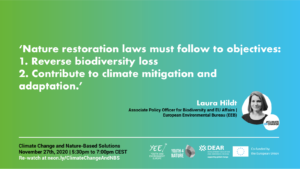 focusing in particular on the EU’s Biodiversity Strategy for 2030 and the implementation of the Nature Directives. Laura gave us great insight into what kind of policies with regard to NBS are being currently implemented or proposed, especially at an EU level. A recent EEA report declared that over 80% of habitats in Europe are in poor condition, and so thankfully the EU has committed to create a legally binding nature ‘restoration law’ in 2021 as part of its 2030 Biodiversity Strategy. Laura highlighted some important preconditions for the law, including that it be specific and urgent and not undermine or duplicate existing regulations. It should also create synergies in addressing the biodiversity and climate crises simultaneously, for example by focusing in particular on restoring and protecting areas such as peatlands, wetlands, and old-growth forests, which are all great for carbon storage.
focusing in particular on the EU’s Biodiversity Strategy for 2030 and the implementation of the Nature Directives. Laura gave us great insight into what kind of policies with regard to NBS are being currently implemented or proposed, especially at an EU level. A recent EEA report declared that over 80% of habitats in Europe are in poor condition, and so thankfully the EU has committed to create a legally binding nature ‘restoration law’ in 2021 as part of its 2030 Biodiversity Strategy. Laura highlighted some important preconditions for the law, including that it be specific and urgent and not undermine or duplicate existing regulations. It should also create synergies in addressing the biodiversity and climate crises simultaneously, for example by focusing in particular on restoring and protecting areas such as peatlands, wetlands, and old-growth forests, which are all great for carbon storage.
Most of the running time of the webinar was then devoted to our superb panellists responding to each other and to questions from our audience, exploring the complexities of, and going into greater detail about, the implementation and role of NBS. Our speakers made the point that although implementing NBS ‘correctly’ is very complex, it is very important that governments do not thus seek to cut corners. Amanda mentioned how governments often have a history of ‘solving’ one issue by creating another one or simply pushing it to another country or a later date, for example by relying too heavily on biomass as a transition fuel. Laura pointed out how much the details matter, for example that improving an ecosystem at near-destruction by only a little bit may count as ‘restoration’ in name under some policies, but it does not at all count that way in spirit. Eirini described how NBS is in fact really the oldest and most natural tool that we have and that if we want to have NBS policies, not only be successful, but even adopted at all, then the buy-in and knowledge of local communities with traditional practices is so necessary.
Overall, our amazing speakers brilliantly illustrated how interrelated the climate and biodiversity crises are, and the important role that NBS can provide both in restoring ecosystems and biodiversity and also in mitigating and adapting to climate change. The challenge of doing this in a manner that is truly sustainable and also socially and economically just is an incredibly difficult one, but by remaining flexible and adaptive in our implementation of NBS, making use of local and indigenous knowledge, and taking a participatory planning approach perhaps we can avoid the even greater challenges of inaction in the face of these crises (EU Restoration Law 2021, take note!).
Wow, we know, that was a lot of information. But if you’re suddenly full of new questions and hyped to learn more, then why not start with these resources on nature-based solutions to climate change!
- Want an overview of the biodiversity situation in the EU, its connection to climate change, and the role of NBS? Get it here right from the Commission itself!
- Prefer an audio-visual format? We got you! The IIED are leading global experts, so let them walk you through NBS in just 6 short minutes – or else in 75, if you have the time!
- Eirini talked about how this year there was a debate over whether or not that well-loved environmental idea of tree-planting can in fact ever be bad – have a read!
- Laura recommended this episode of the fascinating podcast ‘99% Invisible’ – listen to the hosts tell you all about the incredible power of NBS such as peatland restoration!
- All of our speakers emphasised the central role that indigenous people have to play in NBS implementation. Learn about one such person here: Hindou Oumarou Ibrahim!
- Finally, we have to include something for the die-hard enthusiasts among you – here is the IUCN’s landmark report from 2016 that seeks to reframe NBS for the huge challenge ahead!


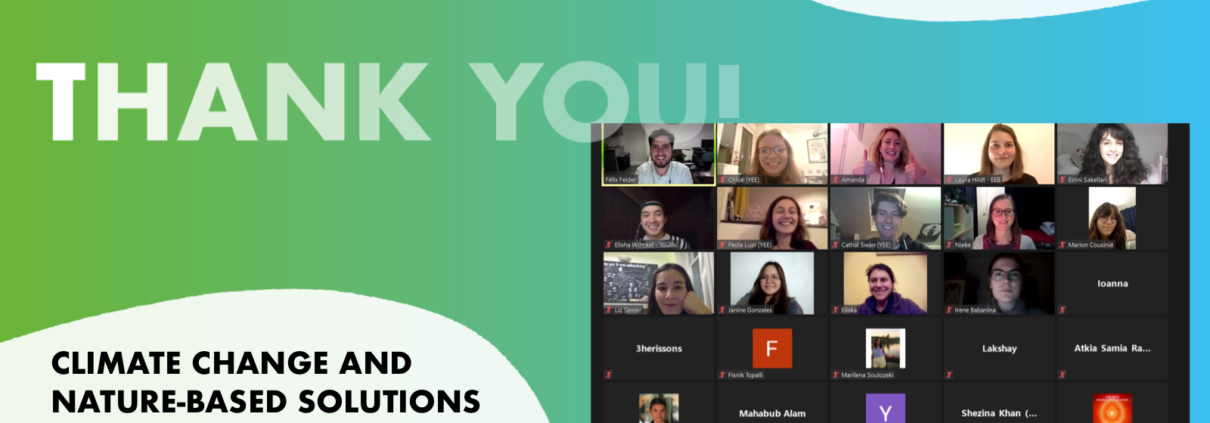
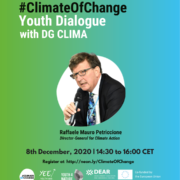




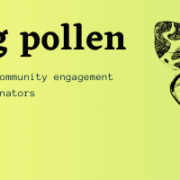
 YEE aims to unite environmental youth non-profit organisations in Europe in order to enhance international cooperation, increase knowledge about the climate crisis, raise awareness of environmental problems and to strengthen participation of youth in environmental decision-making.
YEE aims to unite environmental youth non-profit organisations in Europe in order to enhance international cooperation, increase knowledge about the climate crisis, raise awareness of environmental problems and to strengthen participation of youth in environmental decision-making.




Leave a Reply
Want to join the discussion?Feel free to contribute!